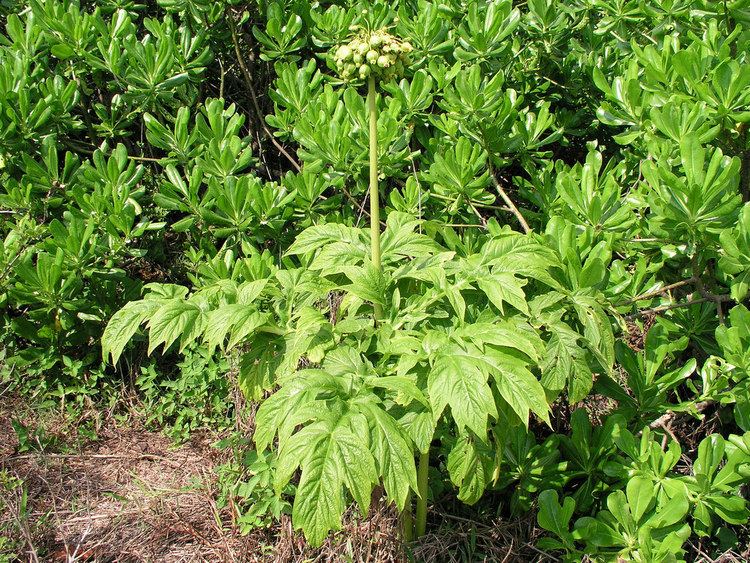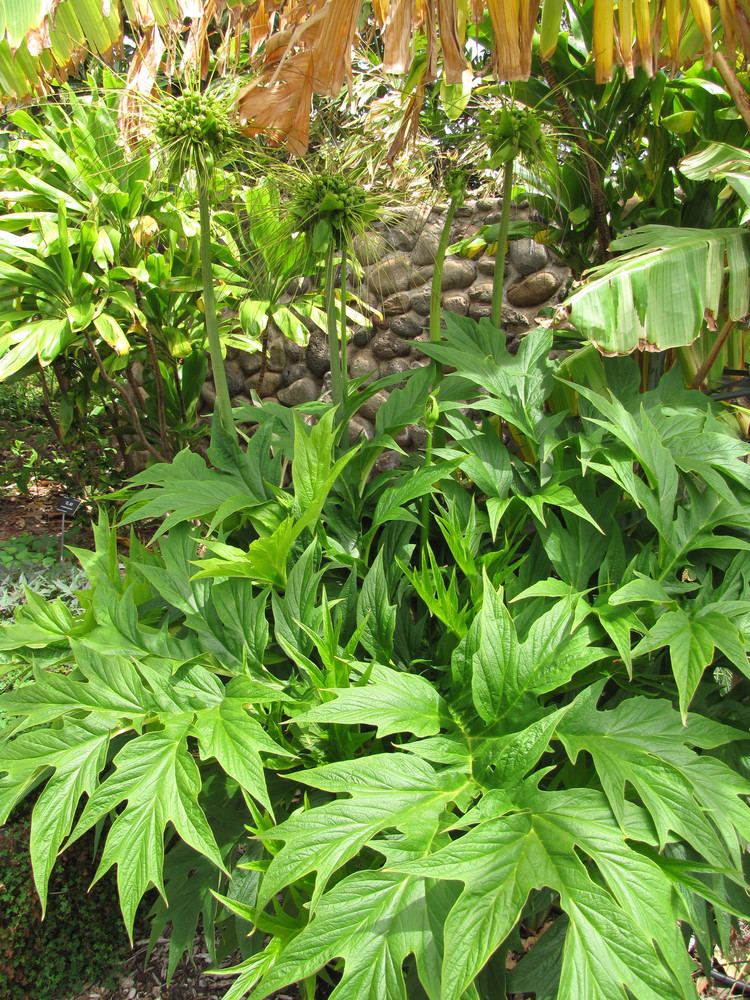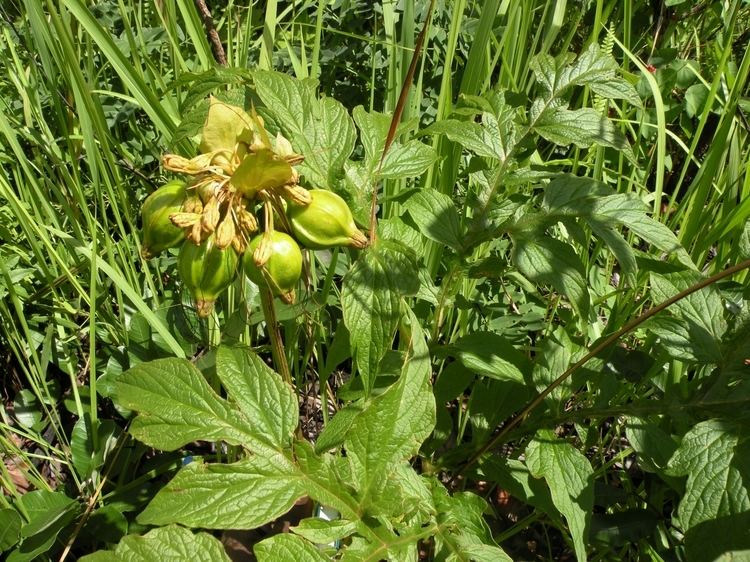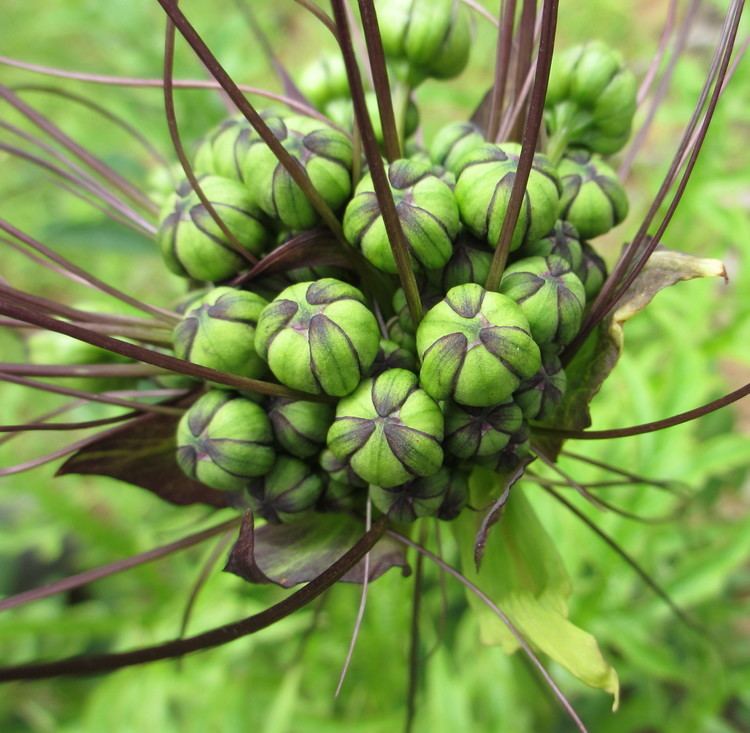Rank Species | Genus Tacca Higher classification Tacca | |
 | ||
Similar Tacca, Tacca chantrieri, Tacca integrifolia, Bauhinia sirindhorniae, Suregada multiflora | ||
Ingredient s of tacca leontopetaloides formulations pankaj oudhia s ethnobotanical surveys 2012
Tacca leontopetaloides is a species of flowering plant in the yam family Dioscoreaceae, that is native to tropical Africa, South Asia, Southeast Asia, northern Australia, New Guinea, Samoa, Micronesia, and Fiji. As an important food source, it was intentionally taken to tropical Pacific Islands with early human migrations. Common names include Polynesian arrowroot, pia (Hawaii, French Polynesia, Niue, and Cook Islands), masoa (Samoa), mahoaʻa (Tonga), yabia (Fiji) gapgap (Guam) and taka (Indonesia).
Contents
- Ingredient s of tacca leontopetaloides formulations pankaj oudhia s ethnobotanical surveys 2012
- Description
- Uses
- References

Description

Several petioles 17–150 cm (6.7–59.1 in) in length extend from the center of the plant, on which the large leaves (30–70 cm or 12–28 in long and up to 120 cm or 47 in wide) are attached. The leaf's upper surface has depressed veins, and the under surface is shiny with bold yellow veins. Flowers are borne on tall stalks in greenish-purple clusters, with long trailing bracts. The plant is usually dormant for part of the year and dies down to the ground. Later, new leaves will arise from the round underground tuber. The tubers are hard and potato-like, with a brown skin and white interior.
Uses

The tubers of Polynesian arrowroot contain starch, making it an important food source for many Pacific Island cultures, primarily for the inhabitants of low islands and atolls. Polynesian arrowroot was prepared into a flour to make a variety of puddings. The tubers were first grated and then allowed to soak in fresh water. The settled starch was rinsed repeatedly to remove the bitterness and then dried. The flour was mixed with mashed taro, breadfruit, or Pandanus fruit extract and mixed with coconut cream to prepare puddings. In Hawaii, a local favorite is haupia, which was originally made with pia flour, coconut cream and kō (cane sugar). Today, Polynesian arrowroot has been largely replaced by cornstarch.

The starch was additionally used to stiffen fabrics, and on some islands, the stem's bast fibres were woven into mats.

In traditional Hawaiian medicine the raw tubers were eaten to treat stomach ailments. Mixed with water and red clay, the plant was consumed to treat diarrhea and dysentery. This combination was also used to stop internal hemorrhaging in the stomach and colon and applied to wounds to stop bleeding.

